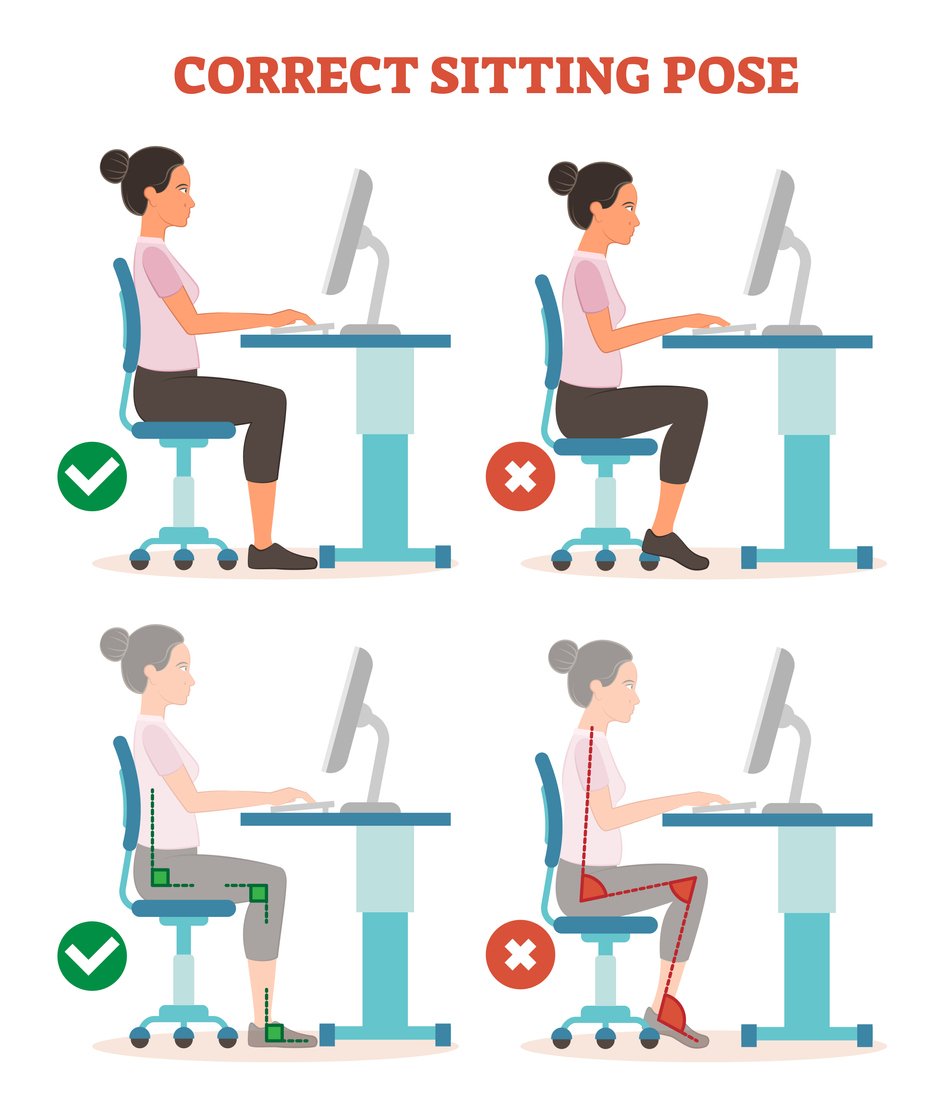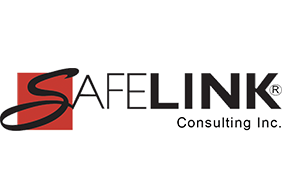Musculoskeletal Disorders (MSD’s) continue to be at the top of the list for work-related injuries so it makes sense that MSD’s are the most frequently reported work-related causes of lost or restricted work time.
Musculoskeletal Disorders are a result of injuries during work procedures, such as, repetitive motion, working in awkward positions, frequent or heavy lifting, pushing, pulling, or carrying of heavy objects. The level of risk depends on the intensity, frequency, and duration of the exposure to these conditions. MSD’s affect the muscles, nerves, blood vessels, ligaments and tendons. Afflicted body parts commonly include the wrist, elbow, upper/lower back, shoulder and neck.
MSD’s are preventable. Employers can reduce occupational injuries and at the same time improve worker comfort, productivity, and job satisfaction by becoming familiar with ways to control risk factors. Employers should make workers aware of simple adjustments that can be made at the workplace to prevent the onset of MSD’s.
Implementing an effective Ergonomics plan can help prevent MSD’s. Ergonomics is the science of fitting workplace conditions and job demands to the capabilities of workers.
Start by assessing the workplace and work practices that could contribute to Musculoskeletal Disorders. Observe workers to learn more about improvements that can be made. It is important for employees to inform their employer of any concerns regarding their workplace set-up and how they interface with it to help prevent the onset of injuries.
Implement changes and make workers aware of these adjustments to their work procedures or area. To avoid ergonomic-related risk factors, employers should ensure that workers are aware of poor posture or tensions that may occur as they perform different tasks. Review changes regularly and make sure workers are utilizing changes or items provided. When the employer has provided items, such as, standing desks, chairs, foot rests, and tools to resolve these types of issues, then workers must use them for their own safety and protection.
Prevention is key:
1) Train workers to be aware of their posture
º Use a chair that provides good back support and sit against the back of the chair.
º Lower the chair or adjust the foot ring or get a footrest, if their feet dangle.
º Tilt the seat forward or use a seat wedge when working in a forward posture; do not jut their chin forward when working. Adjust the position of their work, the work surface, or the chair so that they sit in an upright, supported position.
º Always try to work at a bench cut out; cut outs can help workers get close to their work while sitting against the back of their chair.
º Use supportive shoes and cushioned mats if required to stand for long periods.
º Keep frequently used trays and supplies within close reach.
2) Train workers to keep arms and hands relaxed
º Keep their shoulders relaxed and their elbows close to their sides when working. Avoid reaching to use instruments and work materials.
º Maintain neutral wrist and arm postures when working; work with their wrists in a neutral or straight position as if they were shaking hands with someone.
º Sit close to their work area, keep objects close and adjust their chair to match the height of the bench or other worksurface.
º Avoid repetitive or forceful twisting and turning motions.
º Select equipment and tools that are the right size for their hands.
º Use padding and tubing to reduce pressure and force when working. For example, use rubber tubing or forceps to increase diameter and reduce pinch force. Soften sharp edges on work surfaces with padding.
º Use thin, flexible gloves that fit properly. Ill-fitting and poorly designed gloves increase pinch and grip forces when working.
3) Train workers to avoid static positions
º Workers should be encouraged to vary activities, change their position, and take short breaks every 20 minutes to rest muscles and increase blood circulation.
º Shift their weight often when standing to work. Use a stool or shelf to prop up a foot to relieve pressure on their back.
º Alternate how they hold objects. To vary the task, workers can alternate holding with the thumb and index finger, and with the index and middle fingers.
4) Train workers to avoid other ergonomic-related risk factors
º Remove unnecessary supplies from the work area.
º If using a hood, perform all work 6 inches inside the hood. Position work supplies in their order of use, with those most frequently used near the front of the hood, but not closer than 6 inches from the face of the hood.
º Place equipment on approved elevated turntables for easy retrieval.
º Use diffused lighting to limit glare.
º Take short breaks to stretch muscles and relieve forearm and wrist pressure.
º Adjust chair/stool to a height that allows the shoulders to relax.
5) Train workers to avoid ergonomic-related risk factors when using computers
º Use adjustable keyboard platforms under desks or benches that accommodate use of the mouse beside the keyboard.
º Where possible, position computer workstations in corners or other areas away from doors, entrances and passageways.
º Place monitor so their viewing distance is between 18 and 30 inches.
º Place monitor so the top of the screen is approximately at eye level. This allows the eyes to gravitate naturally toward the center of the screen.
º Use a document holder placed adjacent to and in the same plane as the computer screen.
º Use footrests, where possible, in order to allow them to change leg positions throughout the day.
º Use an appropriate keyboard, mouse or other input devices if they have existing musculoskeletal problems.
º Take mini-breaks of 3 to 5 minutes for every 20- 30 minutes of keyboarding or mouse work. These breaks can be spent doing mild hand exercises or stretches.
º Not to switch from computer keyboarding to other hand-related activities (or vice versa) without an adequate break (at least 15 minutes) to allow the hands to recover.
º Utilize an adjustable desk table or sit-stand workstation.
6) Train workers to be aware of proper lifting techniques
º Warm up before attempting to lift.
º Wear gloves for gripping if needed and appropriate shoes for the task.
º Assess the load size and weight before you lift.
º Make sure that you have a safe path to carry the load.
º When lifting keep back straight and lift by extending your legs.
º Do not bend at the waist or twist. If you must turn, turn with your feet, not your body.
º Obtain a dolly, palette jack, or other mechanical device to assist in lifting.
This information was gathered from OSHA.gov and usc.edu.
Need a Health and Safety Manual for your business? Contact us for customized programs.
Learn more on how you can train and protect your employees on health & safety.
Learn more about what SafeLink Consulting can do to help your business with compliance services, including safety compliance, to meet OSHA training requirements and quality system consulting to meet FDA compliance. SafeLink Consulting assists businesses with workplace safety training, infection control training, HIPAA training online, quality systems, assessments, audits, due diligence, and more.
Industries include:
Dentistry compliance - assisting the dental practice with meeting requirements for OSHA, HIPAA, EPA, and CDC guidelines, patient safety and employee health & safety
Dental Laboratory compliance - assisting the dental lab with meeting requirements for OSHA, FDA, and CDC guidelines, employee health & safety, plus FDA requirements for lab manufacturing custom implant abutment /gmp for medical device manufacturers
Medical Device Manufacturers compliance - assisting with meeting OSHA compliance & FDA requirements, GMP - good manufacturing practices
General Industry compliance - assisting with OSHA compliance and FDA compliance as it pertains to the specific business
Beverage Industry compliance - assisting beverage businesses such as the craft brewery, winery, cidery, distillery, vintner with meeting OSHA compliance, health & safety, FDA requirements / GMP - Good Manufacturing Practices.
Get notification when new regulatory compliance training courses are added plus upcoming events by subscribing to our email news.







Leave Comment